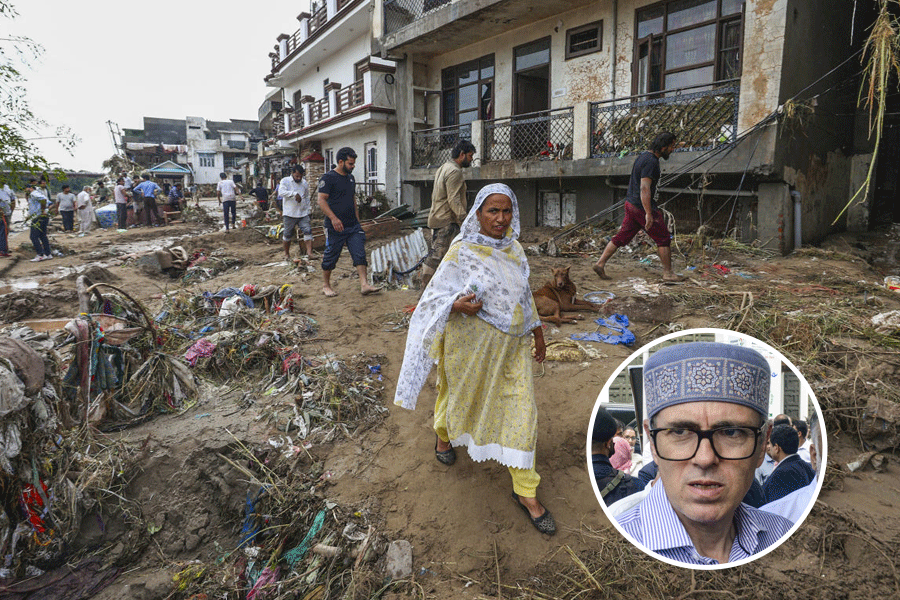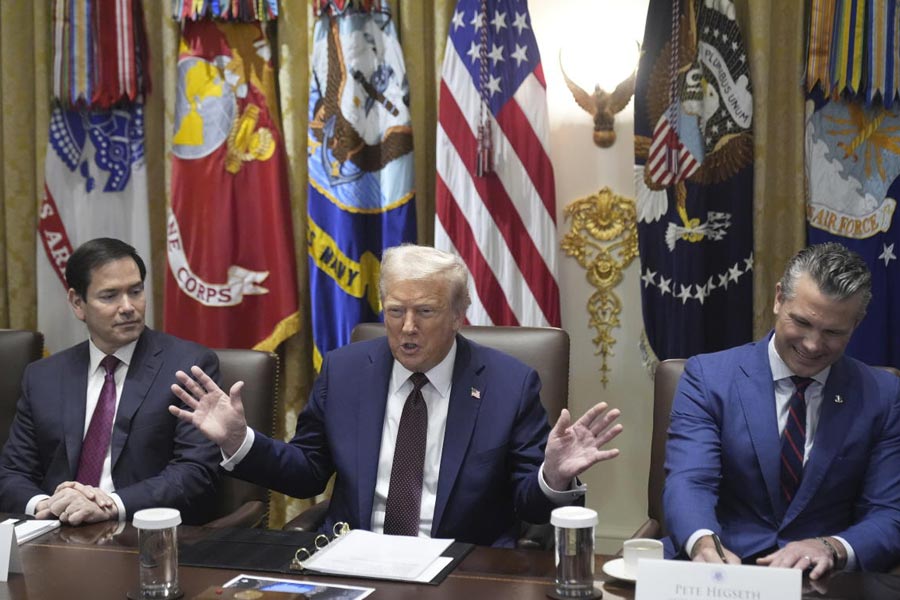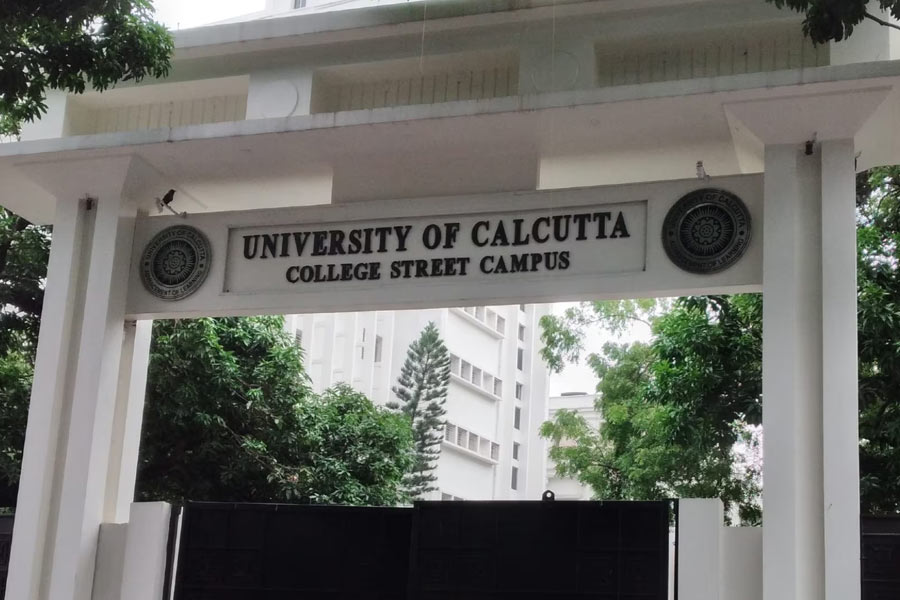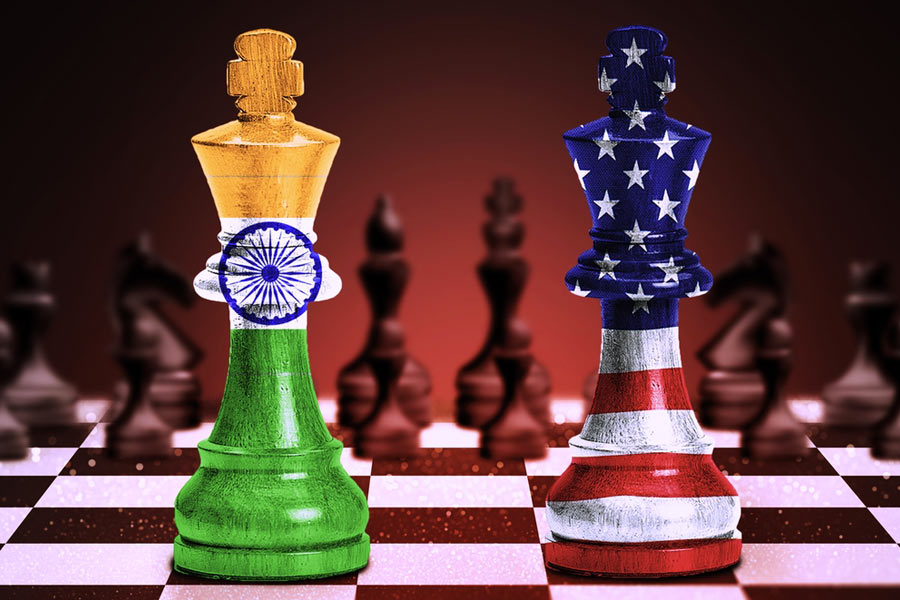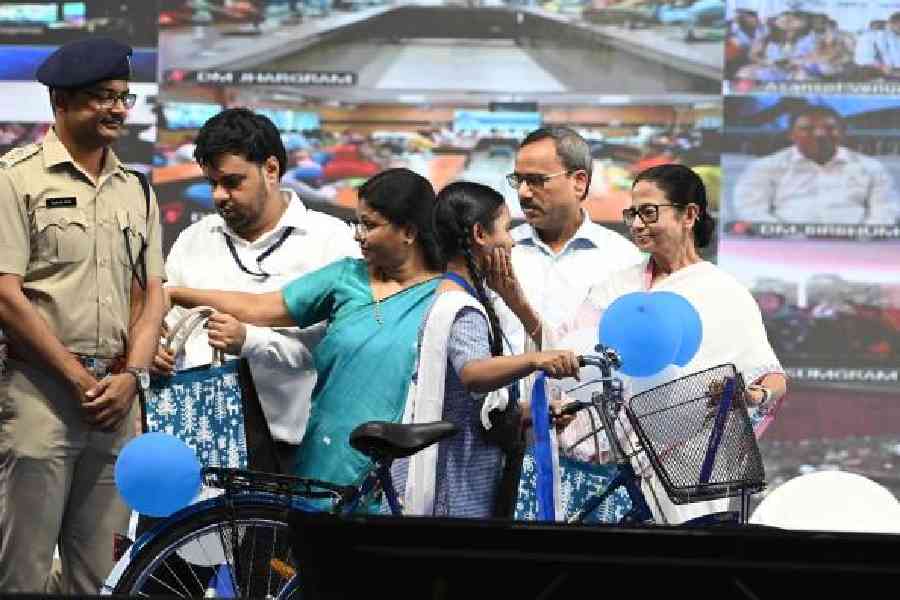 |
| The artists display their tribal paintings at Ram Dayal Munda Kala Bhavan in Ranchi on Saturday. Picture by Hardeep Singh |
Ranchi, Aug. 23: Four tribal women from some nondescript villages of Hazaribagh have turned up in capital Ranchi to exhibit traditional sohrai and khovar paintings, presenting the dying wall and cave art in handmade papers in front of urban aficionados.
Parvati Devi (42), Malo Devi (38), Putli Ganju (36) and Alka Imam (39) have come up with some 30 paintings at a weeklong exhibition-cum-sale on sohrai and khovar kicked off at Ram Dayal Munda Kala Bhavan today.
Organised by Hazaribagh-based Virasat Trust, in collaboration with the state art and culture department, the exhibition is an attempt to provide these village artists a platform to take the tribal arts to the world outside.
Traditionally, sohrai form is made during the winter harvest season depicting animals, birds, flowers. On the other hand, khovar is made during weddings and mainly projects tribal motifs. Earlier, the tribals used to make paintings on walls, caves but in recent times, they have taken to paper.
At the Ranchi exhibition, unframed paintings have been priced at Rs 4,000 each while framed paintings are being sold at Rs 6,000 each to motivate the women painters.
According to the four women — all members of Tribal Women Artists’ Cooperative comprising 40 artists, these paintings have resemblance with the pre-historic rock art of Hazaribagh and have already received national and international acclaims.
In fact, the members of these cooperative, supported by Virasat Trust, have held similar exhibitions in different parts of the country and abroad earlier.
Putli, an expert in sohrai art, used to decor mud houses at her village until the Trust discovered her around a decade ago. “Initially, we would depict our arts only on walls but now we also use high quality handmade paper. My paintings have been sold during exhibitions held in Mumbai, Delhi, Calcutta, Australia, Germany and Italy,” Putli, who received the state artist award in 2006, said.
Parvati impressed many art lovers in Calcutta and Delhi. But she received a shot in the arm when the state recognised her talent with an award last year. Also, she was given the opportunity to create her sohrai magic on the interior of the Army War Memorial at Dipatoli, Ranchi.
Malo and Alka, who painted Ormanjhi zoo boundary walls, have also been equally active to popularise the tribal arts in and outside of Jharkhand. “The two art forms have now found a lot of takers,” said Malo.
Secretary of the Trust Justin Imam said this was the first time when the state art and culture department had taken an initiative to provide these artists a platform.
“We had requested department secretary Vandana Dadel to give us an opportunity and she agreed. The department has also sanctioned Rs 5 lakh to promote the arts in two villages --- Bhelware and Jorakath which will be turned into Visual Art Village,” he said.


